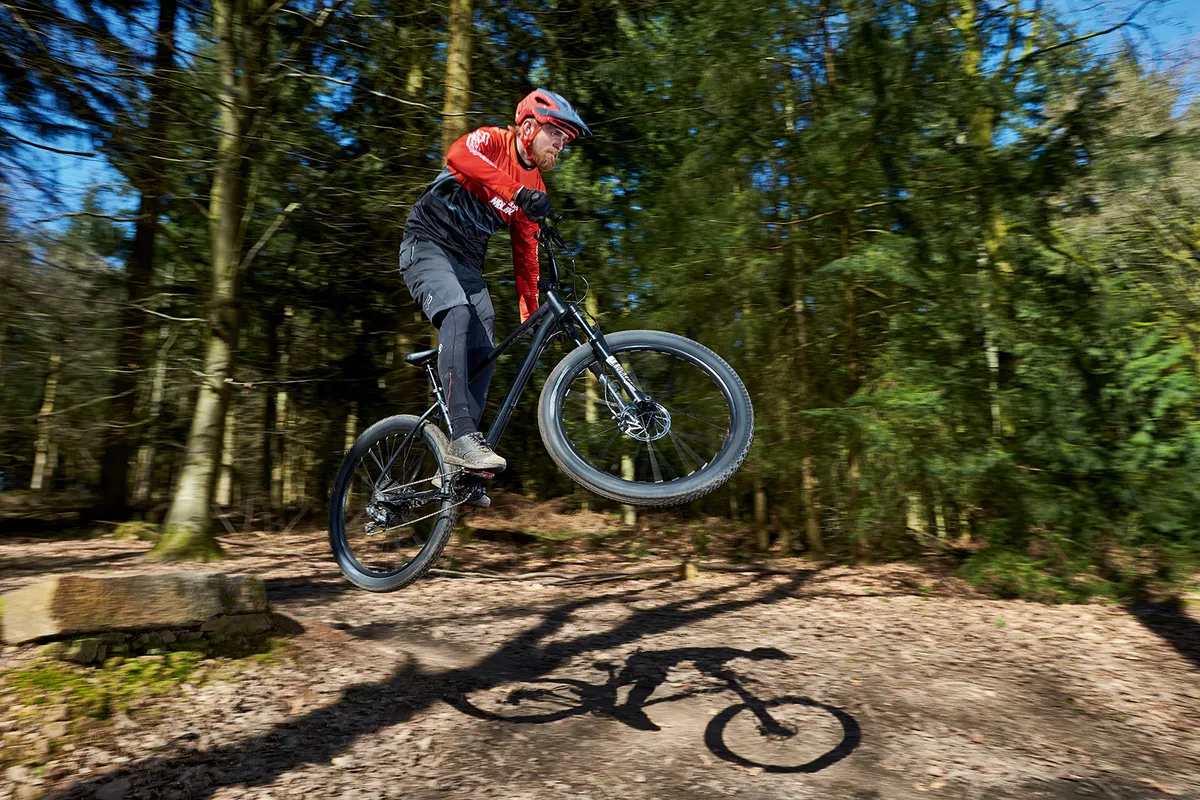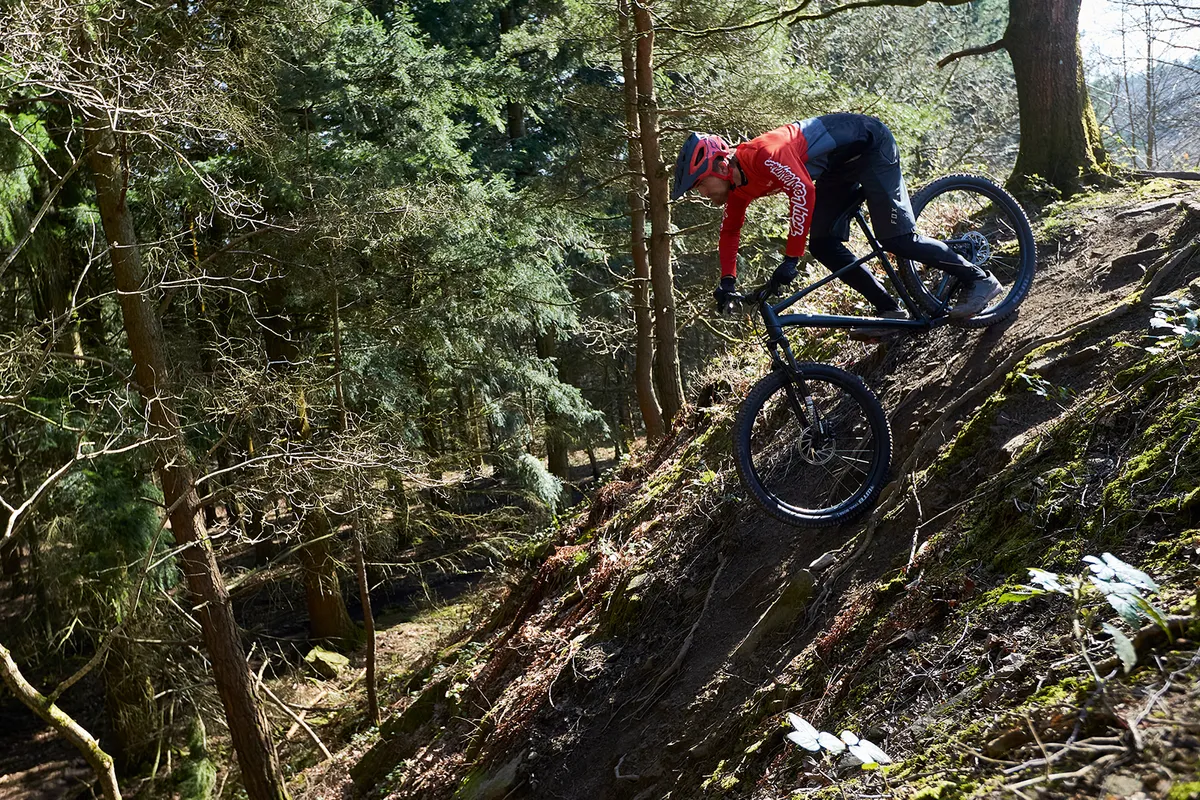Calibre has made a name for itself as the brand to beat when it comes to affordable bikes in the UK.
Its Rake, Line 10, Bossnut and Sentry have all won accolades and bike tests for being among the best you can buy at their respective price points.
We’ve been eager to test the Line 29 for a while now because it combines the brand’s trademark good value with properly progressive geometry. But how does that translate on the trail and up against two more top-value hardtails?
- Best mountain bikes: how to choose the right one for you
- Best mountain bikes under £1,000
- Best hardtail mountain bikes
Calibre Line 29 frame
The Line 29 frame looks purposeful, but far from flashy. In particular, the bottom bracket/chainstay interface appears somewhat overbuilt. It still leaves plenty of clearance around the 2.3in rear tyre that comes as stock though, making it possible to fit something a little higher-volume.
The external cable routing is well thought through and practical, with bolted-on cable holders under the down tube and a neat port in the seat tube for the dropper post.
It’s disappointing that my test bike came with the cables going straight from the frame to the controls, causing them to bend towards the head tube and rub it. A better solution is to cross the cables just before they reach the head tube, so they clear it without rubbing. At least this is easy enough to fix.
The driveside chainstay could do with more substantial protection too.
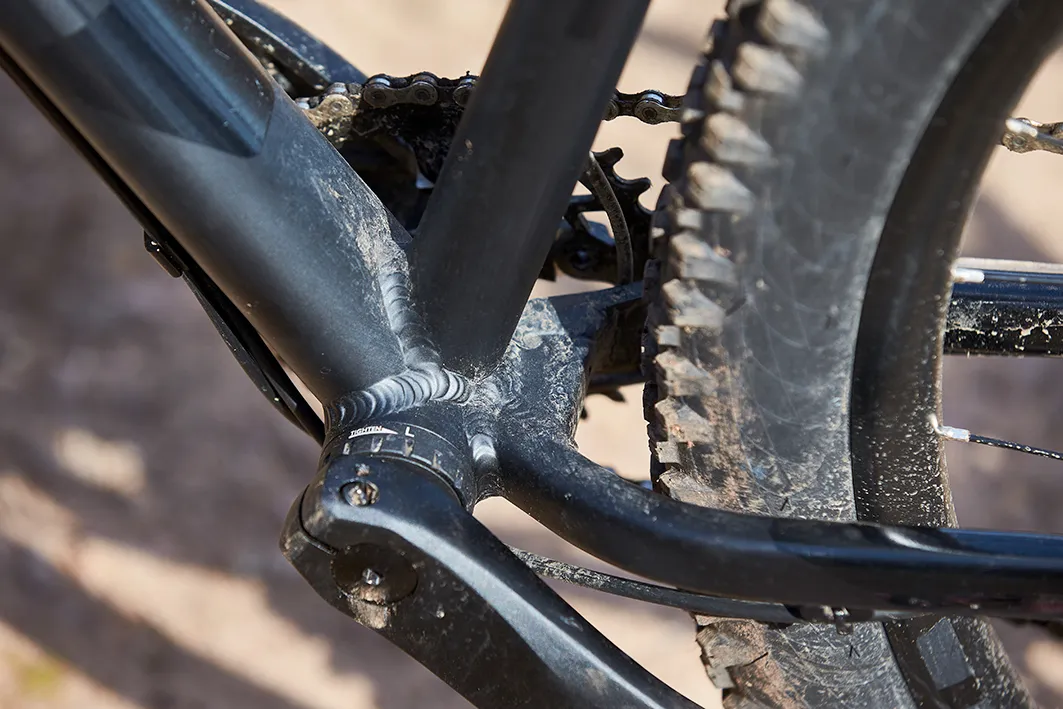
Calibre Line 29 kit
This bike is peerless when it comes to componentry for the price.
The RockShox Recon RL fork is a great mid-range performer, with relatively refined Motion Control damping and a progressive air spring.
SRAM’s NX 11-speed gearing plays nicely with the 11-46t SunRace cassette, offering an ample spread of gears and relatively crisp shifting.
Meanwhile, the SRAM Guide T brakes are both more powerful and more tactile than the Specialized Fuse 27.5 and Vitus Sentier 29 also on test, with a nicely controlled lever feel and modulation.
The KS dropper post works well too, offering 122mm of travel (measured) via an ergonomic under-bar remote. It usually needs a pull to get going when it’s not been used for a while, but otherwise functions well.
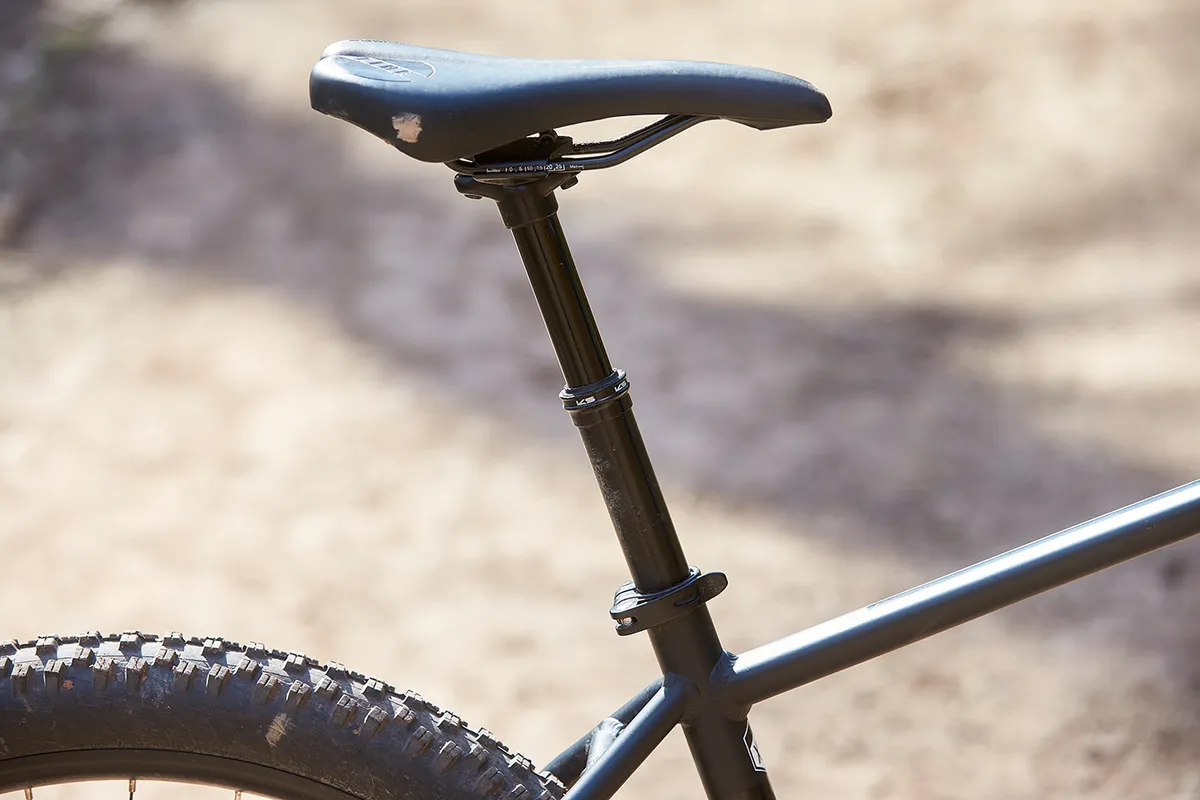
One odd choice is the decision to spec a 2.6in WTB Trail Boss tyre up front and a 2.3in Vigilante out back.
I’d prefer the larger-volume, faster-rolling Trail Boss on the rear (for more cushioning, because it’s a hardtail) and the grippier Vigilante tread pattern up front.
However, while the Vigilante here is tubeless-ready, the Trail boss isn’t, so I wouldn’t swap them round for fear of flatting. This isn’t a deal-breaker, but it’s something that could be improved.
Being picky, I’d also prefer an 800mm handlebar to the 780mm stock bar, but this is personal preference.
Calibre Line 29 ride impressions
One thing to be aware of is the Line 29’s super-short seat tube (485mm, XL), especially because it’s combined with a short seatpost (270mm from the minimum insertion line to the saddle rails).
While Calibre’s size guide suggests that the XL bike should fit riders from 183cm to 198cm tall (6ft to 6ft 6in), this is a bit optimistic. At 190cm and with an inseam of 93cm, I found the saddle was about 30mm too low with the seatpost at its maximum height in the frame.
This means the bike will be too small for anyone with an inseam over 90cm or so, unless there’s another £100-plus in the budget for a longer post. If you’re not sure, make sure to try a bike for size at GO Outdoors.
I measured the effective seat angle at 73.8 degrees, which is slightly slacker than that of the Vitus. However, a much longer reach (495mm) makes the Calibre more comfortable and manageable when climbing steep gradients.
Extra room between the saddle and grips creates a more open body position, making it easier to gulp down air, and brings the torso forward so it’s easier to maintain front-wheel grip.
The RockShox Recon fork settles into its early travel more readily than the X-Fusion RC32 on the Sentier too, helping the front tyre to keep in touch with the ground.
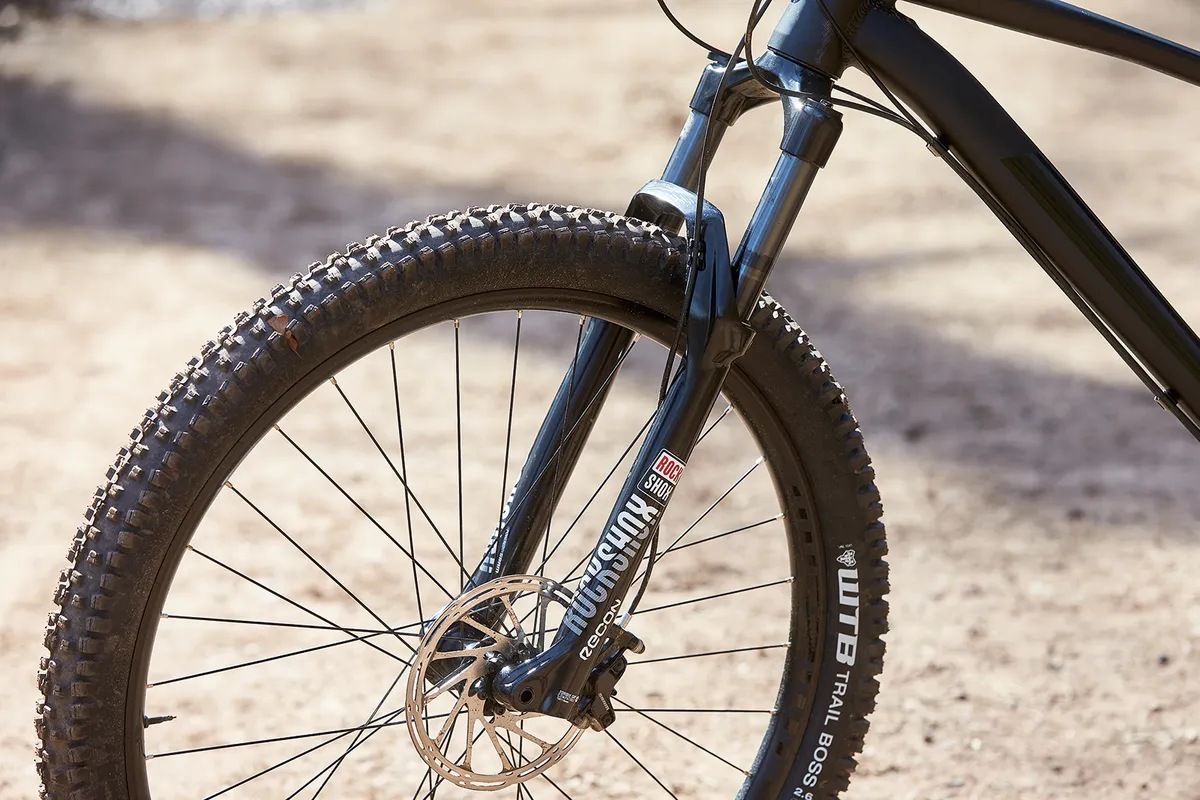
While the 11-46t cassette gives easy enough gears for most climbs, the 32t chainring and 29in wheels mean the bottom gear is actually the stiffest on test.
The bike’s 14.4kg / 31.7lb weight makes it (marginally) the heaviest too, but because of the roomier riding position, I was happiest covering ground and climbing steep hills on the Calibre.
Descending is where it shines brightest, though, with the long front-centre (the distance from the front wheel axle to the BB) and slack head angle making for confident, predictable handling on steep and technical terrain.
The fork’s steerer tube is left nice and long, so there’s scope to experiment with bar height to find the ideal fit (with the other bikes I simply had to put up with a low front end).
There’s also enough room within the 1,250mm wheelbase to decide where to place your body weight for maximum grip and control, rather than having weight distribution dictated by the terrain.
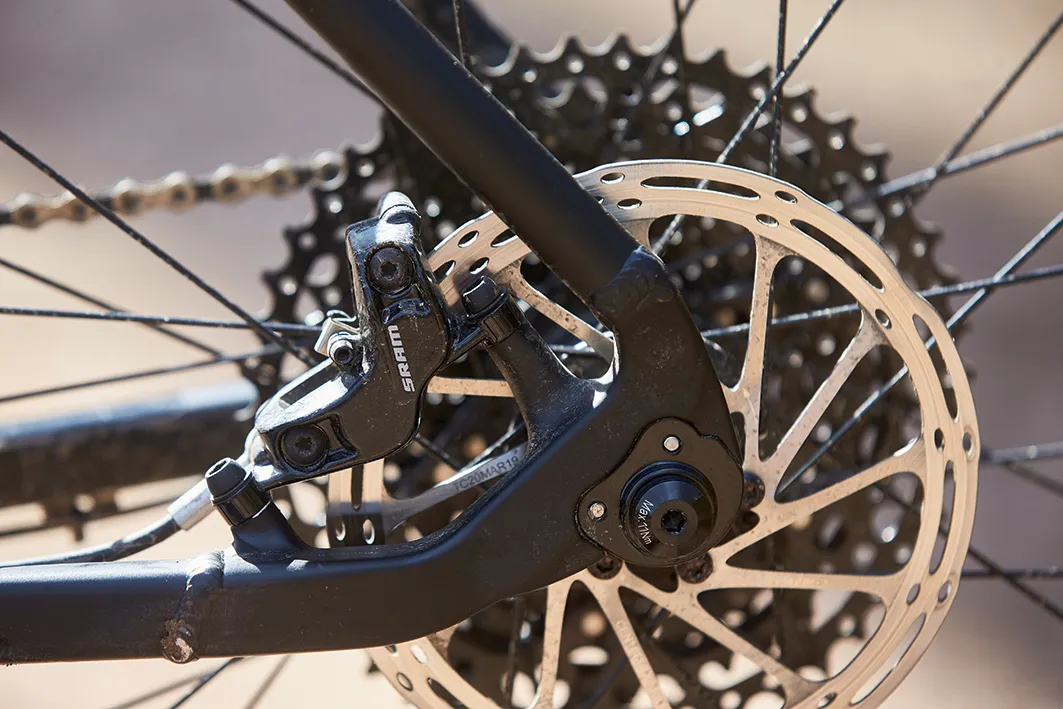
For trying new gaps or riding steep chutes, the Line 29 was my first choice of these three every time. It’s almost comical how hard you can push this £900 bike! Yet on mellower trails, it never feels like ‘too much bike’.
The 64.9-degree head angle isn’t too crazy, and the bike never feels ponderous in tight turns. Fit faster-rolling tyres and it’ll cover cross-country miles just fine.
That said, the longer wheelbase is probably not ideal for pump tracks, dirt jumps or general jibbing. The fork isn’t as forgiving over bigger bumps as the Vitus’s X-Fusion, but it tracks the ground well and never throws up any surprises.
While the tyre pairing wouldn’t be my first choice, they grip well in soft and loose terrain, and the big Trail Boss up front takes the sting out of trail chatter.
Being picky, it can squirm when pushing hard through corners, due to its flexible shoulder tread. A similar-sized but tubeless-ready tyre with sturdier shoulders would be better.
Alternatively, you could put the grippy (but a little narrow) rear tyre up front and buy a faster-rolling, tubeless-ready tyre for the back. Nevertheless, they hold a line well in slippery conditions, and that squirm is a good indicator of how hard I was able to push this bike.
My only real gripe is that short seat-tube and seatpost combo. The fact that a rider bang in the middle of the recommended size range can’t get the saddle high enough is a bit of an own goal. That said, GO Outdoors has stores up and down the country, so you should be able to check if the bike fits you properly (if your local store is currently open). If it does, it’s an absolute blast!
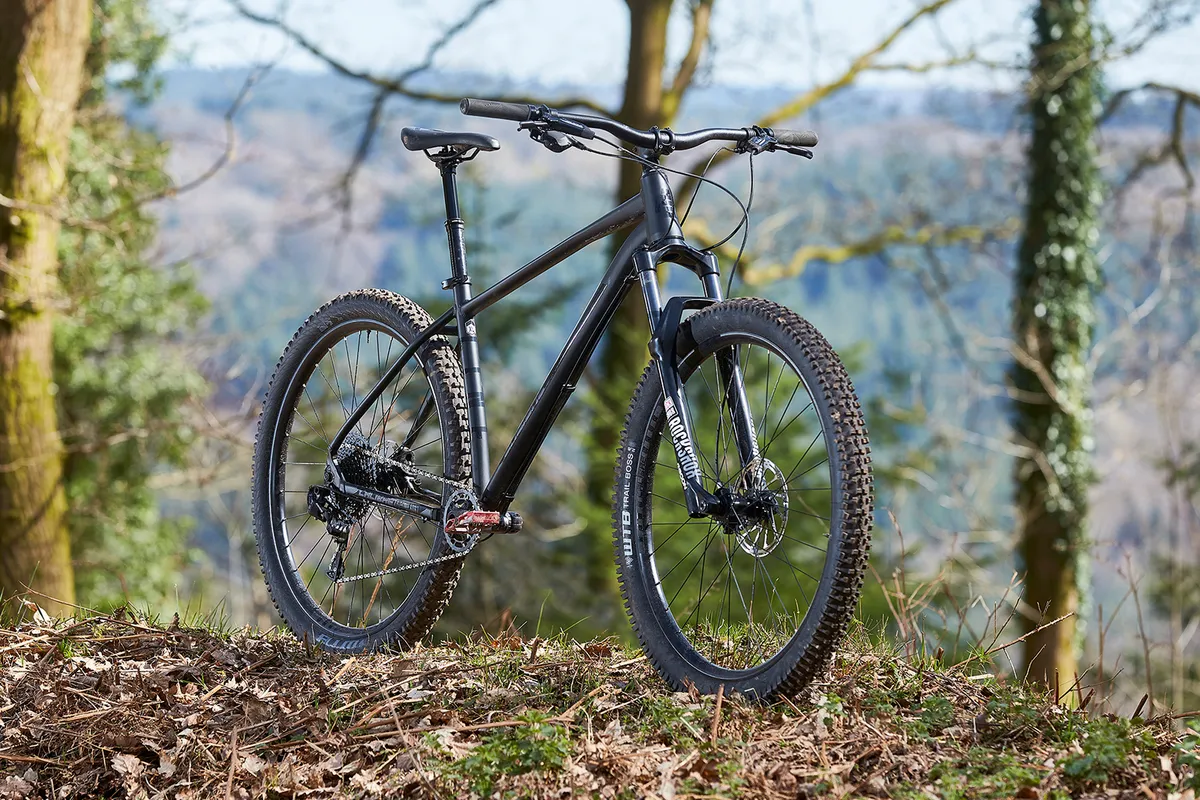
Calibre Line 29 geometry
- Sizes (* tested): S, M, L, XL*
- Seat angle: 73.8 degrees
- Head angle: 64.9 degrees
- Chainstay: 43.5cm / 17.13in
- Seat tube: 48.5cm / 19.09in
- Top tube: 70cm / 27.56in
- Bottom bracket height: 31.2cm / 12.28in
- Wheelbase: 1,250mm / 49.21in
- Reach: 49.5cm / 19.49in
How we tested
This bike was tested as part of a three bike grouptest of top-value trail hardtails priced at under £1,000.
Luckily, we measured-up, tested and shot these bikes before the UK went into Covid-19 lockdown. There wasn’t time to thoroughly test a fourth bike to our usual standards, however, but if you want the most capable trail bike for under a grand, you should be well served by these bikes.
Bikes also on test:
Product
| Brand | Calibre |
| Price | £905.00 |
| Weight | 14.38kg |
Features
| Fork | RockShox Recon RL, 130mm (5.1in) travel |
| Stem | Calibre Trail, 45mm |
| Chain | SRAM NX |
| Frame | 6061 aluminium alloy |
| Tyres | WTB Trail Boss Comp 29x2.6in (f) and WTB Vigilante TCS Light/High Grip 29x2.3in (r) |
| Brakes | SRAM Guide T, 180/160mm rotors |
| Cranks | Samox forged, 30t |
| Saddle | Calibre Trail |
| Wheels | Calibre Trail, 30mm internal width |
| Headset | FSA No.57 Orbit 1.5E ZS |
| Shifter | SRAM NX |
| Cassette | SunRace, 11-46t |
| Seatpost | KS Rage-i 122mm (measured) dropper |
| Grips/tape | Calibre lock-on |
| Handlebar | Calibre Trail, 760mm |
| Bottom bracket | External |
| Available sizes | S, M, L, XL |
| Rear derailleur | SRAM NX (1x11) |
| Features | Hubs: Formula Axles: 15x110mm Boost (f) / 12x148mm Boost (r) Spokes count: 32 |
